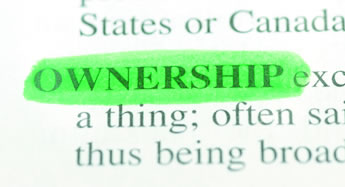The new Intellectual Property Act 2014
June 2014
What are the most significant features of the Act?
The Intellectual Property Act 2014 tidies up parts of some existing IP laws, in particular design and patent law. Though it will be important to particular industries and stakeholders, including the life sciences, it does not introduce radical changes which are likely to have a wide impact.
The Act has had a long gestation period. It arose tangentially from the Hargreaves Review of Intellectual Property, which reported in May 2011. Although the principal focus of that Review was on digital rights and its terms of reference did not even extend to design laws, Hargreaves was alerted by lobbying to the "patchwork of protection" afforded by the availability of 4 different forms of design right in the UK and advocated further review. This the Intellectual Property Office has done and the 2014 Act is the result, though the patchwork remains essentially unaltered.
The principal changes are to design law, with the introduction of criminal liability and penalties for infringers, and a change in the default position on ownership of rights in some designs.
The other changes brought about by the Act are as regards patents. Most of all, while there is some small tinkering with existing patents law, the Act mainly lays the groundwork for much more significant change in the future, with the introduction of the Unified Patent Court.
How will the new measures affect IP law?
The changes brought about by the Act relate to design laws, both registered and unregistered, and patents. (There are some consequential amendments to copyright law arising out of the design changes).
Patents
The Act provides the initial framework for the implementation of the Unified Patent Court in the United Kingdom. A new section 88A will be introduced into the  Patents Act 1977 enabling the Secretary of State to make an order giving effect in the UK to the provisions of the Agreement on the Unified Patent Court. London is to be one of the three main centres of the new Pan-EU Court.
Patents Act 1977 enabling the Secretary of State to make an order giving effect in the UK to the provisions of the Agreement on the Unified Patent Court. London is to be one of the three main centres of the new Pan-EU Court.
Also, the grounds on which the UKIPO can provide an invalidity opinion on a patent have been extended from novelty and inventive step alone to all prescribed invalidity grounds in the Act. The UKIPO will also be able to issue opinions on the infringement and validity of SPCs.
Furthermore, the Comptroller will be able to revoke a patent for obviousness and on all grounds of lack of novelty (no longer just an earlier filed application).
Finally, the patent marking provisions have been brought up to date. Patentees no longer have to put the patent number onto a product to indicate that it is patented, they can instead now provide a web link.
Design changes
The most striking change is the introduction of criminal penalties and liability for infringement of registered designs. New sections 35ZA to C of the Registered Designs Act 1949 provide that is an offence for a person in the course of a business to intentionally copy a registered design so as to make a product exactly to that design or only immaterially different. An important proviso is that the person must know or have reason to believe that the design is a registered design. There is a similar offence applicable to parties offering, marketing, importing or using, or stocking such products in the course of a business. The offence is punishable by imprisonment of up to 10 years and by fines, and applies to both UK and EU Community registered designs.
There is also an important change in relation to the ownership of unregistered designs. Since these were first introduced in 1989, the treatment of commissioned designs has been different to the way commissioned works in related fields, such as copyright, are treated. Under unregistered design law, the designs have until now been owned by the commissioning party unless an agreement provided otherwise. The Act changes this so that in all relevant cases (registered design, unregistered design and copyright) the first owner of the work will be the designer unless a contract provides otherwise.
There are a number of other smaller changes to definitions and formalities, qualification tests (including for some copyright works) and defences.
 Does the 2014 Act generate any challenges in this area?
Does the 2014 Act generate any challenges in this area?
The introduction of criminal penalties for some design infringements will inevitably be of concern to parties who may find themselves liable. While time will tell what effect the changes have on deliberate criminality, the line between civil infringement and criminal infringement will not necessarily become clear until after some cases have been litigated, which may in turn have a dissuasive effect on some activities which may actually not be criminal under the new laws. In particular, if the infringing design has "material" differences to the registered design, there will be no criminal liability. Inconsistent approaches to design cases in the English and European courts will mean that drawing the line between material and immaterial changes will be hazardous.
The Government's stated primary aim for the Act is that it will "make it easier for business to understand what is protected under design law" (UKIPO summary of the Act). Though not a particularly ambitious goal, it seems doubtful that it will be achieved.
What are the important dates for practitioners to watch out for?
The Act's provisions will start to become law during the Government's next legislative "window", in October 2014. However, a number will require implementation by Statutory Instrument and, as the Government has recently found with its proposed changes to copyright exceptions, this can delay or even derail the process.
The UPC is still some time away, but ratification in the UK is now likely by spring next year.
This article was first published on LexisPSL.
If you have any questions on this article or would like to propose a subject to be addressed by Synapse please contact us.


"the line between civil infringement and criminal infringement will not necessarily become clear until after some cases have been litigated"

